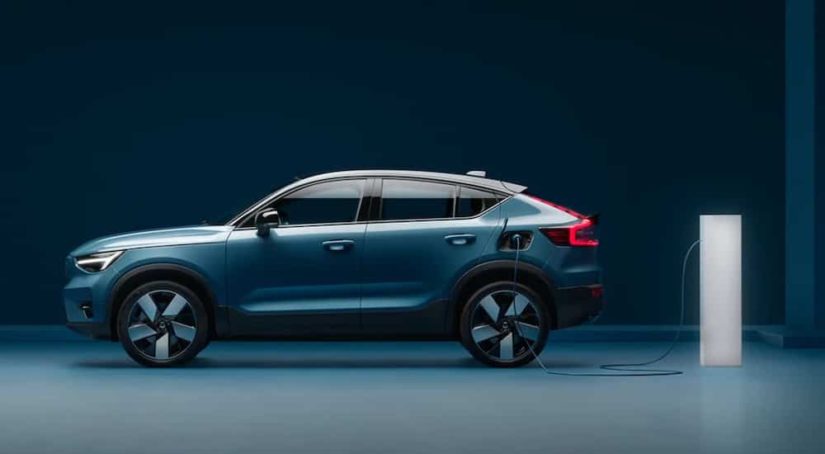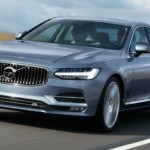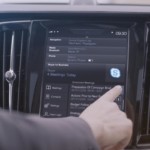When Volvo was founded in 1927, the guiding principle of the brand was to build vehicles that would keep their drivers safe on the road. Over the past century, the Swedish manufacturer has never wavered from that goal, leading the way with safety technologies from three-point seatbelts to side airbags. Today, Volvo has ten models on the IIHS Top Safety Pick+ list, more than any other manufacturer. However, Volvo wants to be known for more than safety, and it has been quietly electrifying its lineup, introducing a number of hybrids and full EVs over the past few years. Volvo has even launched a new all-electric performance branch to push the boundaries of electric vehicles.
Volvo began its path to electrification in 2016 with the launch of the T8 plug-in hybrid powertrain on its flagship XC90 SUV. By 2020, every Volvo model was available as a plug-in hybrid, with the exception of the XC40 and the V90. With the first stage of Volvo’s electric transformation all but complete, it was time to move on to stage two––battery electric vehicles. Volvo had used its Polestar performance branch to test the technology, introducing the all-electric Polestar 2 in 2019 before the unveiling of the all-electric 2021 XC40 Recharge.
The current plan is for Volvo to be all-electric by 2030, with electric vehicles making up half of all sales by 2025. Given how quickly Volvo has managed to pivot from superchargers to plug-in hybrids, we have no trouble believing that the brand will manage to meet its deadlines. Until then, drivers have a range of electrified options to choose from, all of which maintain Volvo’s high safety standards and minimalist approach to luxury in addition to providing reduced emissions.
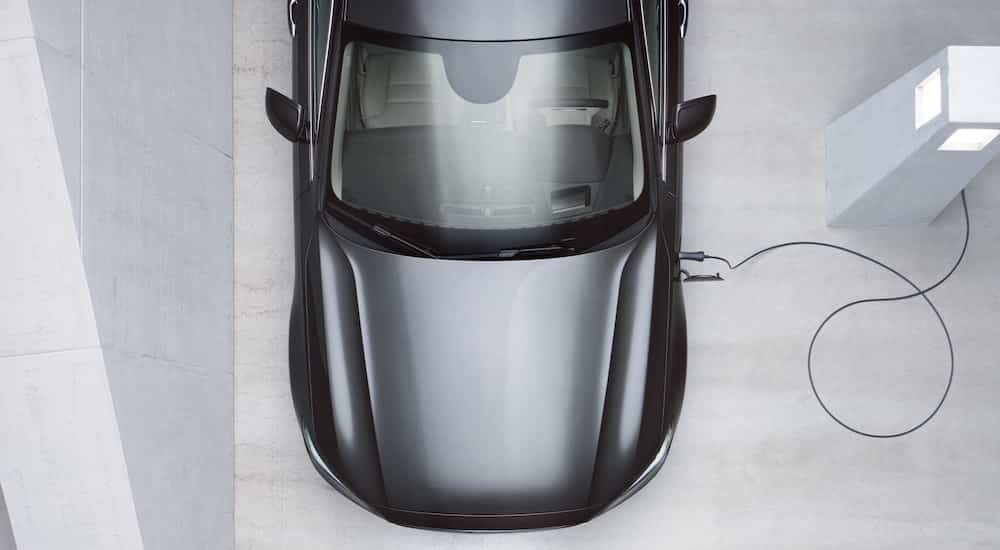
Volvo Plug-In Hybrid Models
The 2016 XC90 was a major break from the past for Volvo, introducing the T8 electrified powertrain. The T8 is unique for being based on a 2.0L four-cylinder that is both supercharged and turbocharged, producing 313 horsepower by itself. Add a 9.2 kWh lithium-ion battery pack and rear electric motor, and the total system output jumps to an even 400 horsepower with an all-electric range of 14 miles. The powertrain has been updated since then, and the 2022 version now comes in two different versions.
The standard 2020 XC90 Recharge (the Recharge name was applied to all electrified Volvo models in 2020) still has 400 horsepower, but it now offers 18 miles of electric range. The new XC90 Recharge Extended Range upgrades the battery pack to 18.8 kWh for an electric range of 36 miles. The larger battery pack also improves the effectiveness of the electric motor, increasing total power output to an impressive 455 horsepower. Given that this three-row SUV was already capable of 0-60 times of under 5 seconds, the XC90 Recharge is no Prius.
In 2018, the T8 plug-in hybrid option was extended to the S90 midsize sedan and the XC60 compact SUV. Despite the smaller size of these vehicles, the battery size and power output went unchanged, allowing the S90 and XC60 to offer even better performance. When it comes to range, the more streamlined S90 is the best of the bunch, able to travel 21 miles on battery power alone. Both the smaller models also received Extended Range versions of their own for 2022, boosting the S90 Recharge to an electric range of 38 miles.
The final models to undergo the plug-in hybrid treatment were the S60 compact sedan in 2019 and the V60 compact wagon in 2020. Stuffing the 400 horsepower T8 powertrain into these relatively lightweight vehicles resulted in blistering acceleration with 0-60 times in the low 4-second range. If that isn’t enough, just take a look at the S60 Polestar Engineered. On top of an extra 15 horsepower, the Polestar treatment includes 19-inch forged alloy wheels, six-piston Brembo brakes, manually adjustable Öhlins dampers, and more, making the S60 a serious sports sedan.
What’s a Polestar?
Mercedes-AMG, BMW M, Lexus F…It seems that every self-respecting luxury brand has a performance branch these days, and Volvo is no exception. Polestar got its start in 1996 as an independent tuning house competing in the Swedish Touring Car Championship. Volvo recognized the achievements of the small company, making them an official partner in 2009 and eventually buying Polestar in 2015. However, Volvo had bigger plans for its new performance branch than simply offering upgraded versions of Volvo models, setting Polestar up as its own independent brand in 2017.
Polestar’s first production vehicle under the new arrangement was the 2020 Polestar 1. Although this plug-in hybrid model took advantage of the existing 2.0L turbocharged and supercharged Volvo engine, the electric side of the equation received some serious upgrades. Rather than a single 65 kW electric motor on the rear axle, the Polestar 1 used a pair of 116 kW motors for a total system output of 600 horsepower. The battery pack was also enlarged to 34 kWh, roughly twice the capacity of the Volvo Recharge Extended Range models, giving the Polestar 1 an all-electric range of 52 miles. This impressive powertrain was then placed in a sleek two-door body, unlike anything Volvo sells.
With its first vehicle out of the way, Polestar then moved on to designing a fully-electric model. The 2021 Polestar 2 is either a low-slung SUV or a tall liftback sedan, but whatever you call it, the car is a worthy entry in the fast-growing world of electric vehicles. A 78 kWh battery pack is combined with either one or two electric motors. The single-motor version provides a respectable 231 horsepower and 270 miles of range, while the dual-motor model generates 408 horsepower and offers 249 miles of range. Adding the available Performance Package outfits the Polestar 2 with the same forged alloy wheels, Brembo brakes, and Öhlins dampers found in Volvo’s Polestar Engineered models, giving the electric vehicle handling to match its acceleration.
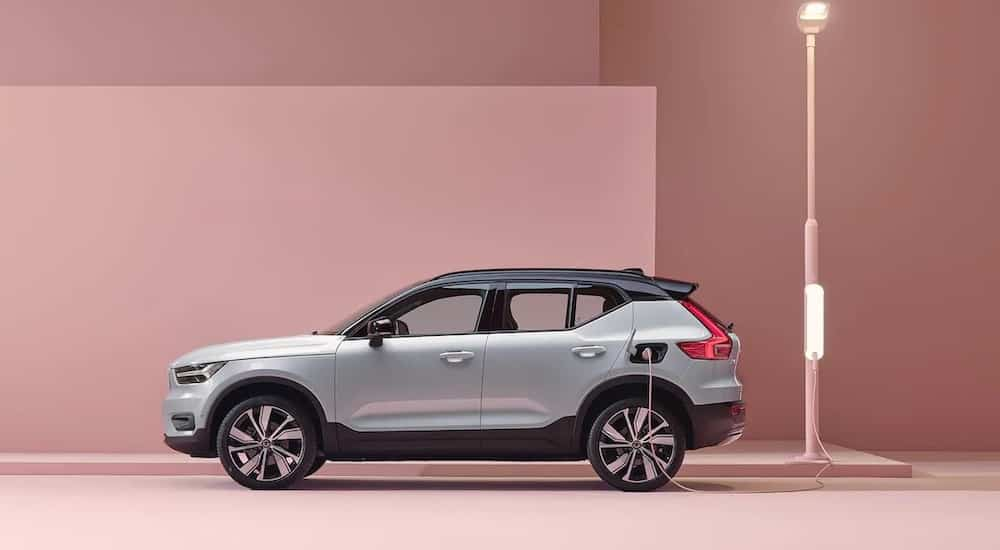
Volvo Goes Electric
As Polestar unveiled the Polestar 2, Volvo debuted its own model based on the same platform. The 2021 XC40 Recharge may share a name with the plug-in hybrid vehicles from the Swedish brand, but it is an all-electric subcompact SUV that represents the next step for Volvo. Interestingly, the Volvo model is only sold in a dual-motor configuration that produces 402 horsepower, making it more powerful than the base single-motor Polestar, even if it is a few ponies short of the dual-motor performance model. However, a slightly smaller 75 kWh battery pack and less streamlined design mean that the XC40 only has 208 miles of range. In 2022, this problem was remedied with the C40 Recharge, which trades the boxy SUV shape of the XC40 for a sloping rear roof, upping its range to 226 miles despite using the same powertrain.
The Volvo XC40, Volvo C40, and Polestar 2 are a convincing first effort on Volvo’s path to becoming an all-electric brand over the next eight years. All three members of the trio offer solid performance to go with traditional Volvo safety, even if they are priced a little on the high side for what they offer. Volvo isn’t slowing down either. By 2025, Volvo is expected to unveil all-electric replacements for the XC90 and XC60, as well as a new electric sedan. Meanwhile, Polestar has laid out plans for a Polestar 3, Polestar 4, and Polestar 5 to begin production over the next few years. While we may have to wait a bit longer for Volvo to become as well known for electric vehicles as it is for safety, the brand has already made great strides in electrification and currently offers drivers a solid selection of powerful plug-in hybrids to choose from.
